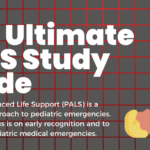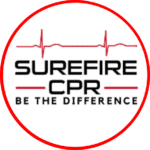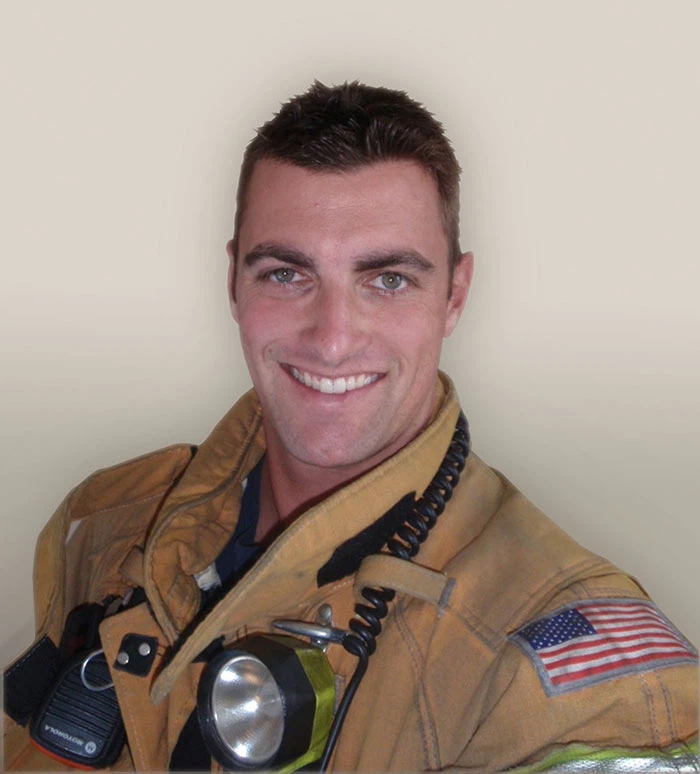If you own or rent a commercial location, chances are, it needs an AED. Short for Automatic External Defibrillator, an AED is an essential life-saving device that administers an electric shock to the heart to restart it in the event of sudden cardiac arrest. According to data from the American Heart Association, over 320,000 out-of-hospital cardiac arrests occur each year in the United States alone. What’s worse, these cardiac arrests can take just seconds to end a life. Having an easily-accessible AED in your business or large residential location can mean the difference between life and death. Need more convincing? For most properties, it’s required by law. In this guide, we discuss the importance of AEDs and outline the properties in which they are required in California, per the updated Health and Safety Code (HSC). Read on for more information, and learn how to use an AED in one of our many award-winning life-saving courses here at SureFire CPR!
What is an AED?
Before jumping into where AEDs are required, it’s important to review what they are, how they work, and why they can save lives wherever they’re installed. Short for Automatic External Defibrillator, and AED is an electronic device that sends an electric shock to the heart in order to restore a normal heartbeat. AEDs are typically used to stop an irregular heartbeat (known as arrhythmia) and restore a normal heart rhythm after sudden cardiac arrest (SCA).
A cardiac arrest occurs due to an electrical malfunction within the heart. The heart’s pumping action is disrupted (most commonly by a phenomenon known as ventricular fibrillation: a rapid, unsynchronized heart rhythm that starts in the lower chambers of the heat—quickly making it impossible for the heart to pump blood to vital organs, including the brain. Within seconds of sudden cardiac arrest, a person will lose consciousness and his or her heart will stop beating. With each passing minute, the individual’s chance of survival will drop by 7 to 10 percent.
That’s where AEDs come in. AEDs “reset” the heart’s electrical system by administering an electric shock to the heart that often stops an irregular heart rhythm. Today’s AEDs feature a built-in sensor that checks for an irregular rhythm after being placed on an individual’s chest and before administering a shock. If an irregular heartbeat is detected, the AED will prompt the user to administer a shock with the press of a button. Many AEDs feature voice instructions to help guide users through this process and steps to take after a shock is administered.
Where Are AEDs Required in California?
Effective January 2019, California’s updated Health and Safety Code (HSC) has set forth an updated list of buildings that must have an AED. Below, you’ll find this list laid out in an abbreviated though fully comprehensive form. To read the list in full, please visit the California Health and Safety Code (HSC), Division 13: Housing, Part 3: Miscellaneous, Chapter 3: Automatic External Defibrillators. To learn more about the state’s definitions for each of the buildings mentioned below, please refer to Chapter 3 of Part 2 in Volume 1 of the 2019 California Building Code, Title 24.
- Assembly, business, educational, factory, institutional, and mercantile buildings with an occupancy of 200 or more. This covers virtually all large commercial locations. If you operate a business or any other type of commercial property with a capacity of 200 people or more.
- Residential buildings with an occupancy of 200 or more, excluding single-family and multifamily dwelling units. These include apartment buildings and certain condominiums.
According to California’s updated Health and Safety Code, the buildings outlined above must be built on or after January 1, 2017 or constructed prior to January 1, 2017 and modified, renovated, or tenant improved on or after January 1, 2020 to require an AED. Wondering in your business renovations of tenant improvements require your older building to have an AED? If they exceed one hundred thousand dollars ($100,000) in one calendar year, the answer is yes. Otherwise, an AED is not required.
Learn How to Use an AED With Our Team at SureFire CPR
Having an AED in your building is the first step to ensuring safety for everyone under your roof. The second step is knowing how to use your AED. While most of today’s AEDs come with instructions that can guide new users through steps for administering defibrillations, it’s best to have background knowledge and skills to perform effectively in the event of sudden cardiac arrest. After all, emotions run high in emergency situations — and when it comes to sudden cardiac arrest, every second counts. So, how can you learn to operate an AED like a pro? Get certified with our team at SureFire CPR.
In our CPR certification and our CPR, AED, and First Aid certification courses, you’ll learn how to use an AED in a number of situations. These courses will also teach you how to administer CPR and several other life-saving techniques. Upon completion of each course, you’ll receive a CPR certification card that lasts two years. Led by award-winning instructors with decades of real-world experience, each of these courses last just half a day and leave students with a wealth of knowledge and skills to use in emergency situations. We also proudly offer BLS certification and ACLS certification courses for those in search of more in-depth instruction.
Interested in learning more about which buildings require AEDs? Ready to enroll in one of our award-winning courses here at SureFire CPR? Use the links in this guide for more information, and contact us today!









